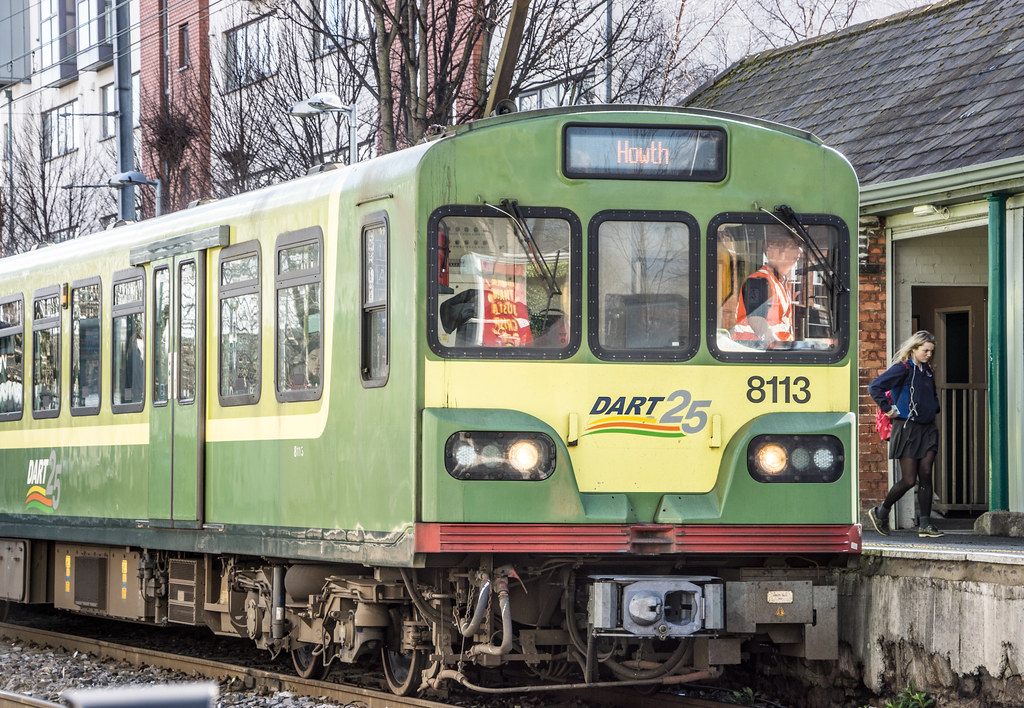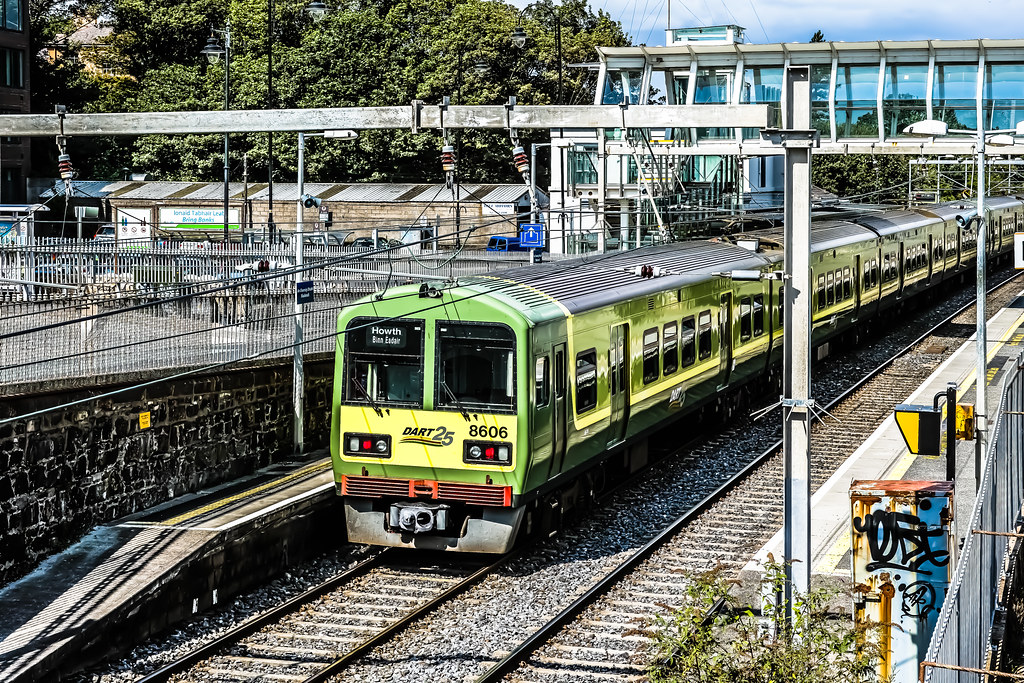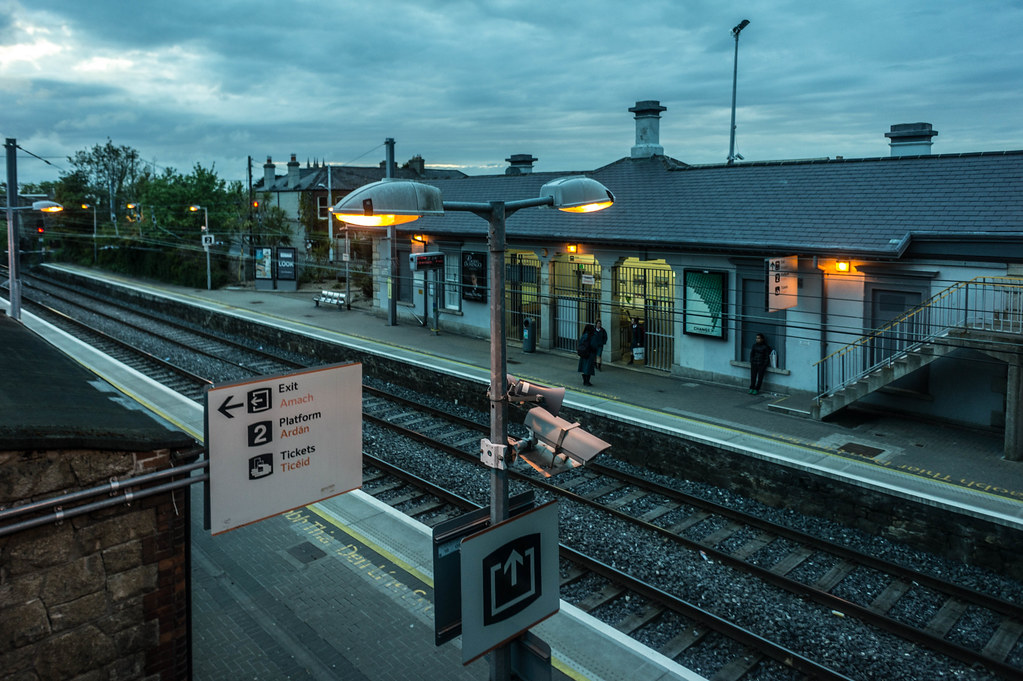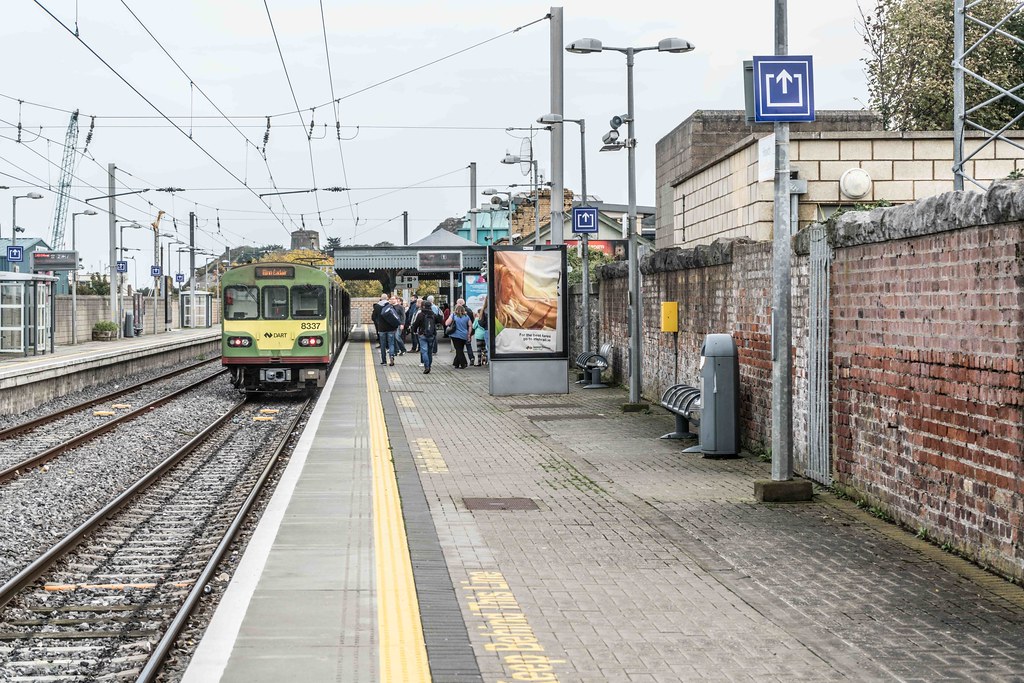
Custom Search
THE GREEN MENU OPTIONS ARE MOBILE FRIENDLY AND ARE FASTER SO THEY ARE RECOMMENDED. THE RED MENU OPTIONS ARE SOMEWHAT SLOWER DEPENDING ON YOUR DEVICE OR BROWSER AND ARE MORE SUITABLE FOR DESKTOPS AND LAPTOPS. THE BLUE OPTIONS ARE PAGE LINKS AND WILL BE PHASED OUT GOING FORWARD
DART TRAIN SYSTEM
The original DART service ran from Howth north-east of Dublin, through the city centre stations of Connolly, Tara Street, and Pearse, and south to Bray in County Wicklow. This remained the route for some 15 years, until the extension by one stop further south to the town of Greystones, and north from Howth Junction & Donaghmede by two stops further along the Belfast main line to Portmarnock and Malahide.
Through south Dublin, from Pearse Station to Dún Laoghaire, the DART runs over Ireland's oldest railway, dating from 1834. For most of its route south of the city centre, the DART hugs the coast closely, and the scenic views over Dublin Bay make it a popular tourist attraction.
Prior to the start of the electrified DART service in 1984, the line was previously operated by CIÉ 2600 Class diesel railcars dating from the early 1950s, which had been converted in the early 1970s to push-pull operation with a CIE 201 Class diesel locomotive at one end of the train and a driving trailer carriage at the other. The service was notoriously uncomfortable, unreliable, frequently overcrowded and in urgent need of upgrading. By the late 1970s, the 2600 Class diesel railcars were in a poor condition, with spare parts becoming increasing hard to obtain. The conversion to push-pull operation was a temporary expediency until an adequate replacement (i.e. the DART service) could be introduced.
In the early 1980s, in preparation for electrification, two new stations were added. Sandymount station at Sandymount Avenue was opened on the site where a station had previously stood, and Salthill and Monkstown was built near the site of the original Kingstown railway terminus, between Seapoint and Dún Laoghaire. At the time of the electrification work from 1981–82, the former branch to Dún Laoghaire pier used by ferry passengers was disconnected as the main track would have had to have been lowered to fit the overhead power cables under road bridges in Dún Laoghaire; some ten years later a new passenger ferry terminal was built immediately adjacent to the main Dún Laoghaire station. Its busiest day was on 4 July 1996, when 250,000 people went to Dún Laoghaire to visit the US aircraft carrier, USS John F Kennedy.
Through south Dublin, from Pearse Station to Dún Laoghaire, the DART runs over Ireland's oldest railway, dating from 1834. For most of its route south of the city centre, the DART hugs the coast closely, and the scenic views over Dublin Bay make it a popular tourist attraction.
Prior to the start of the electrified DART service in 1984, the line was previously operated by CIÉ 2600 Class diesel railcars dating from the early 1950s, which had been converted in the early 1970s to push-pull operation with a CIE 201 Class diesel locomotive at one end of the train and a driving trailer carriage at the other. The service was notoriously uncomfortable, unreliable, frequently overcrowded and in urgent need of upgrading. By the late 1970s, the 2600 Class diesel railcars were in a poor condition, with spare parts becoming increasing hard to obtain. The conversion to push-pull operation was a temporary expediency until an adequate replacement (i.e. the DART service) could be introduced.
In the early 1980s, in preparation for electrification, two new stations were added. Sandymount station at Sandymount Avenue was opened on the site where a station had previously stood, and Salthill and Monkstown was built near the site of the original Kingstown railway terminus, between Seapoint and Dún Laoghaire. At the time of the electrification work from 1981–82, the former branch to Dún Laoghaire pier used by ferry passengers was disconnected as the main track would have had to have been lowered to fit the overhead power cables under road bridges in Dún Laoghaire; some ten years later a new passenger ferry terminal was built immediately adjacent to the main Dún Laoghaire station. Its busiest day was on 4 July 1996, when 250,000 people went to Dún Laoghaire to visit the US aircraft carrier, USS John F Kennedy.
LOADING



